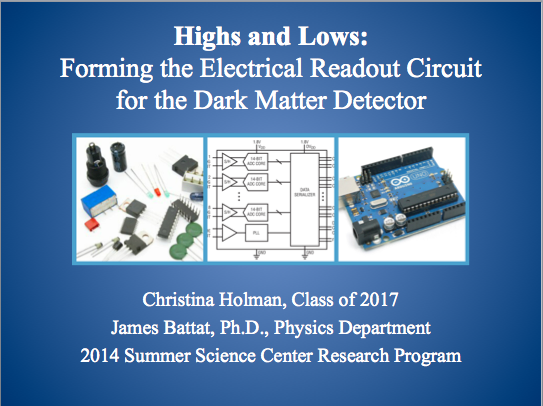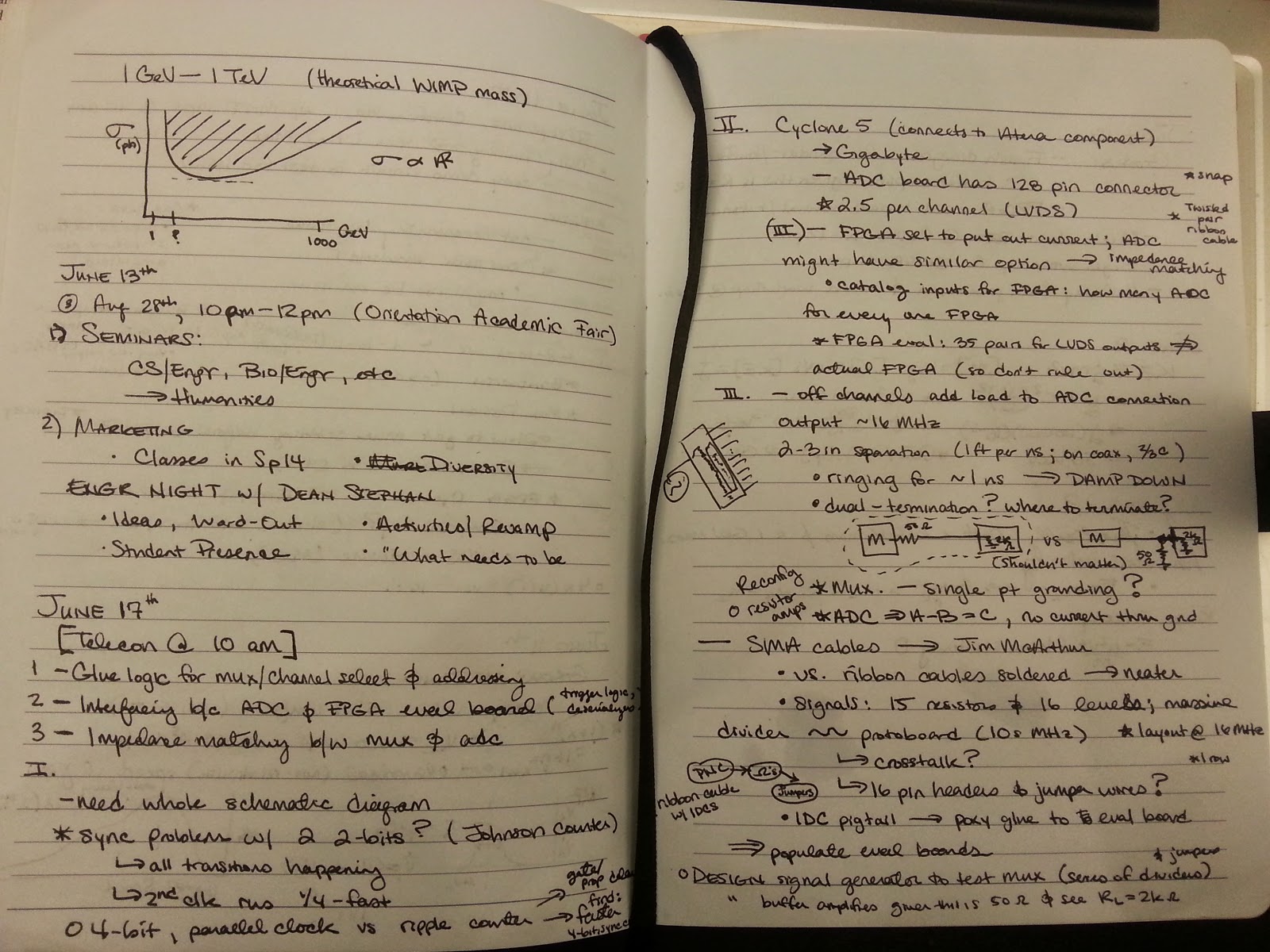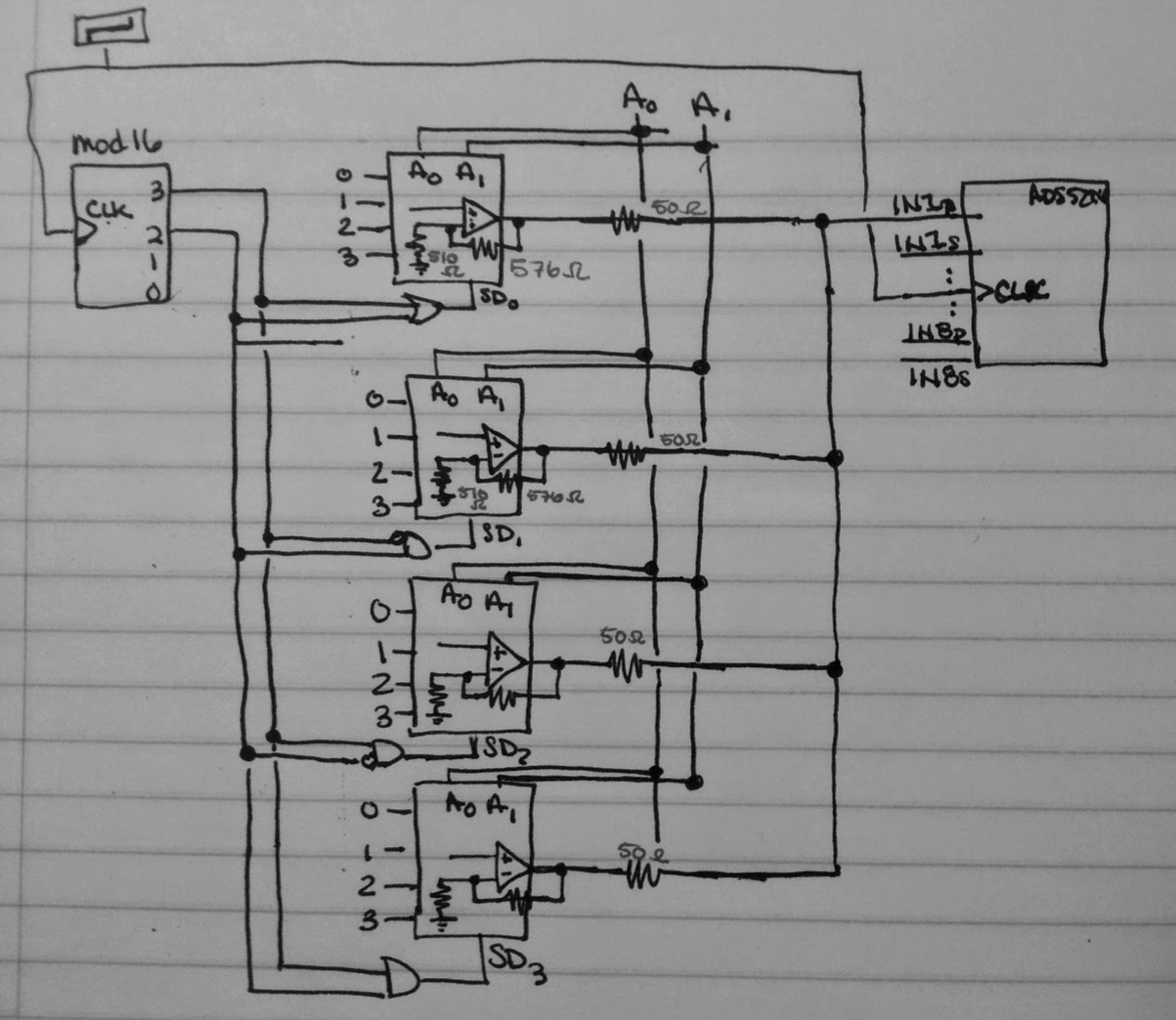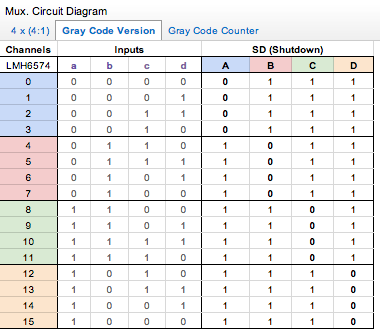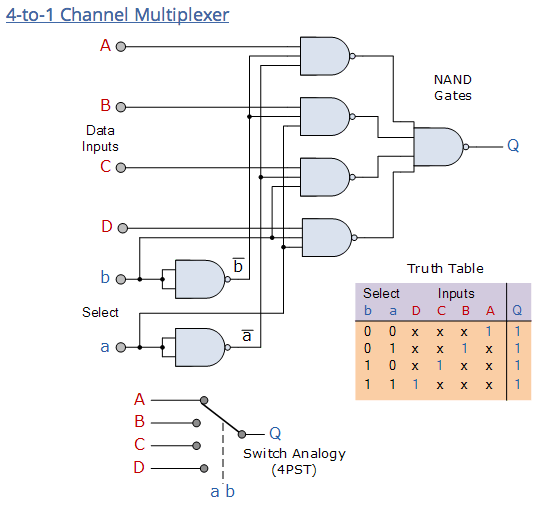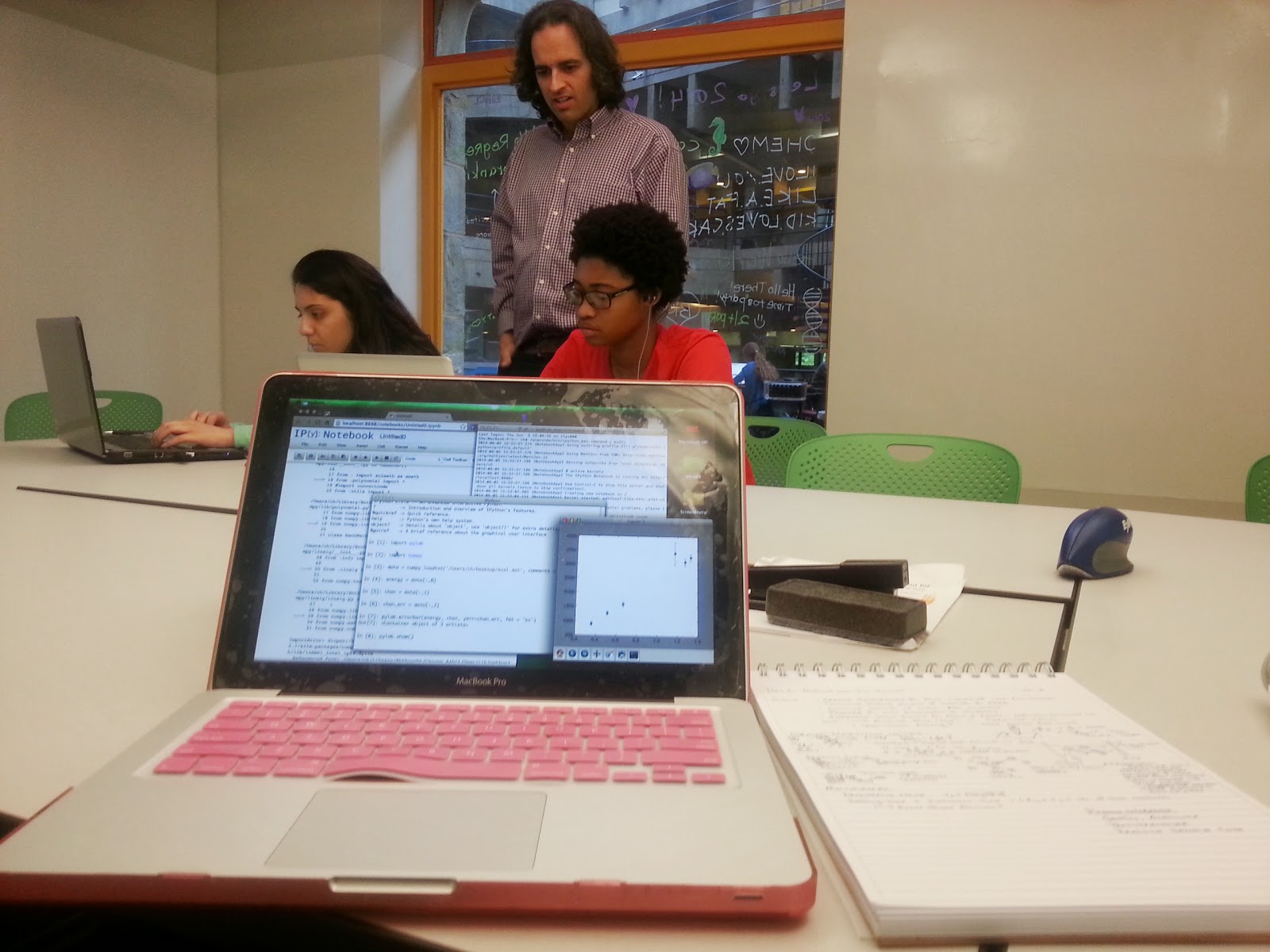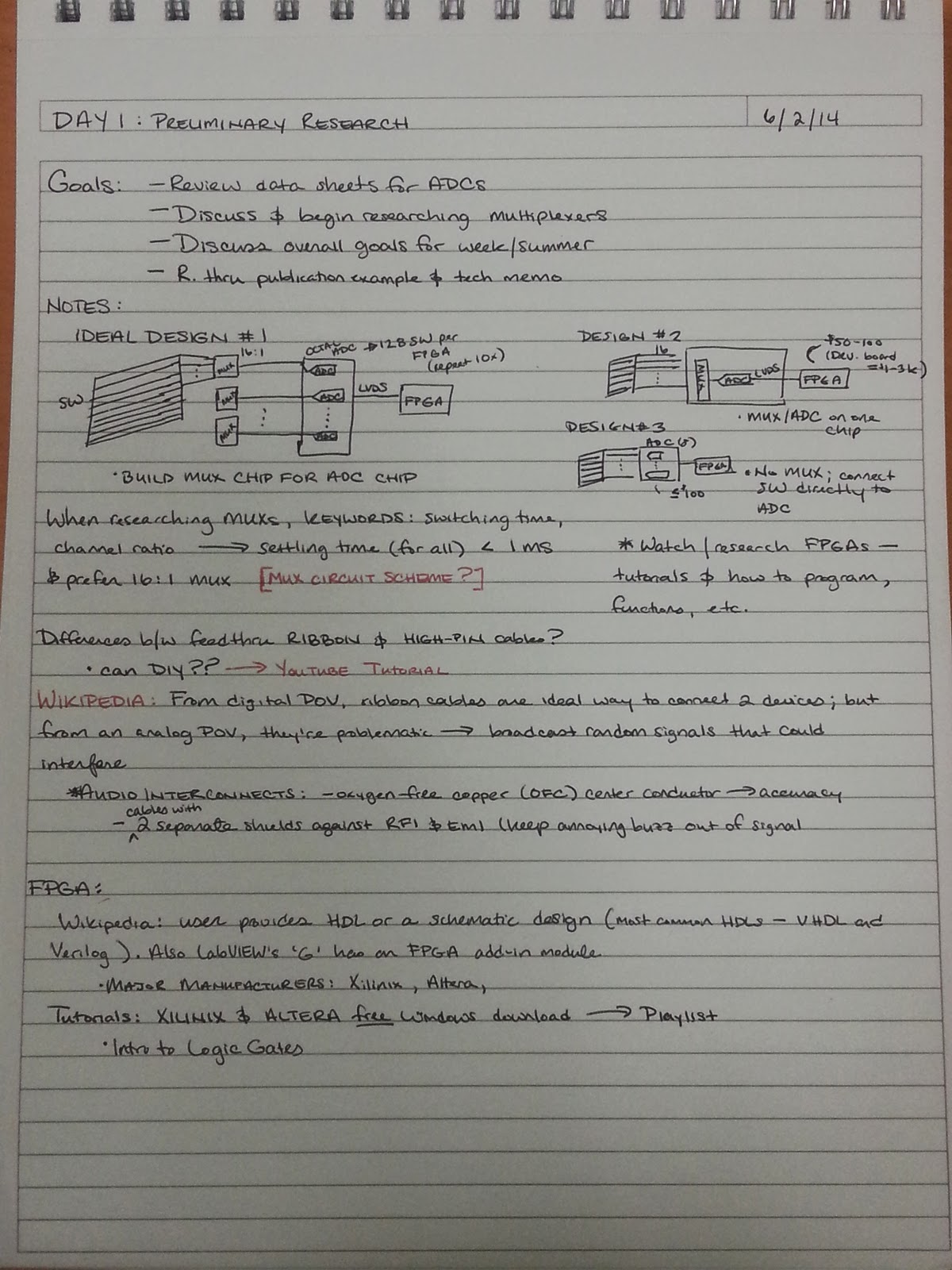Circuit Building
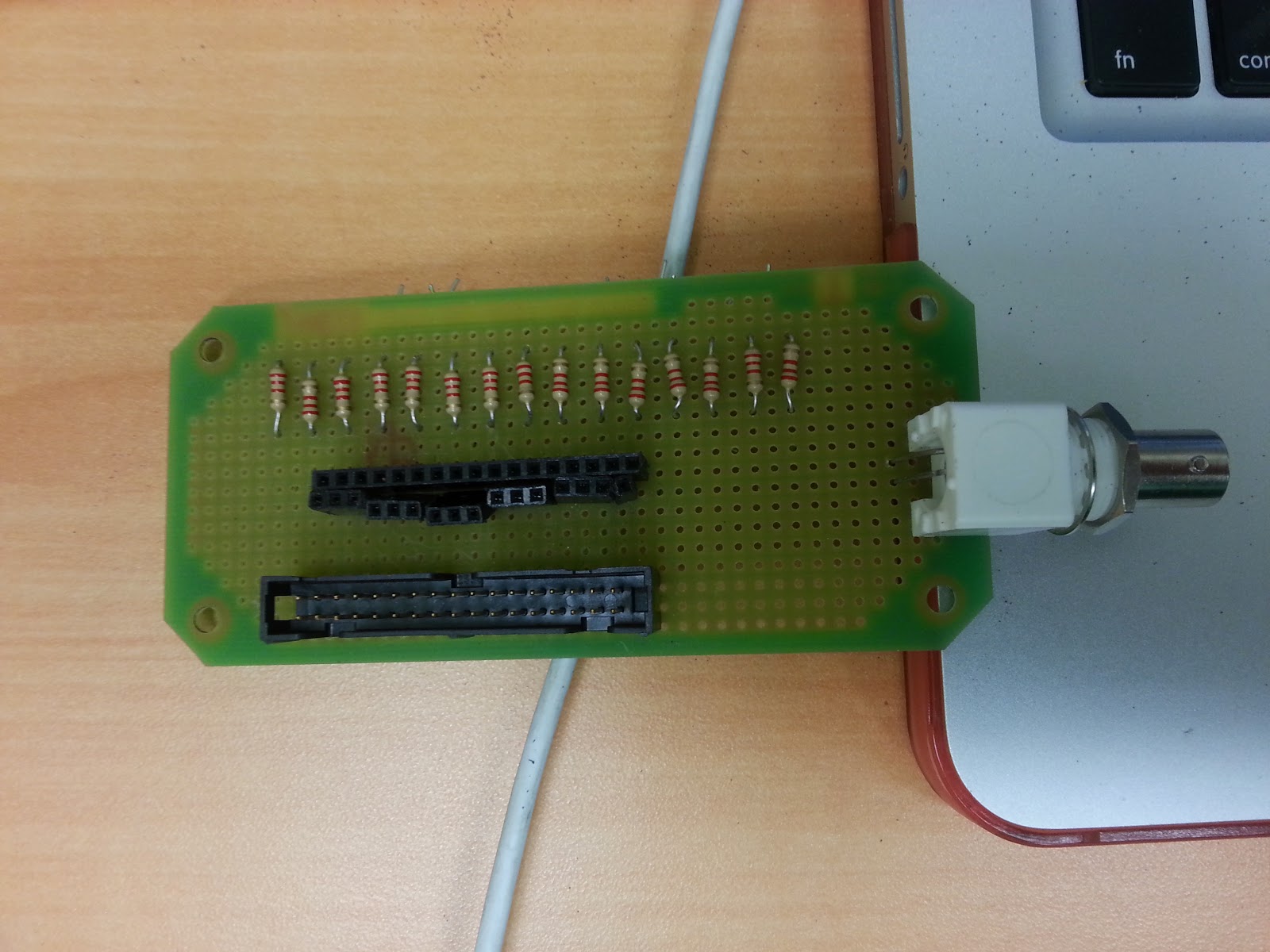
16-Channel Simulation Circuit Yesterday, we received both the package of multiplexers and eval boards and the package from Adafruit with the PCB boards. In the lab we are currently wrapping up the divider circuit to simulate the mux signals, using 15 resistors, female pin headers, a SMA cable connector and a ribbon cable connector (left). Once we solder everything to the board as needed and test for the signal sounds with an oscilloscope, we can actually try to mount the discrete logic pieces to the PCB board and look at the muxes. Packages of Electronics However, to ensure that these muxes are completely compatible with the whole configuration, I have to create voltage diagrams and timing diagrams. The original mod16 binary counter would not work with the decoder or muxes due to different specifications. I found another 4-bit, synchronous counter that used the same voltage levels for High/Low signals (except for one scenario that we are looking into). Now using the
